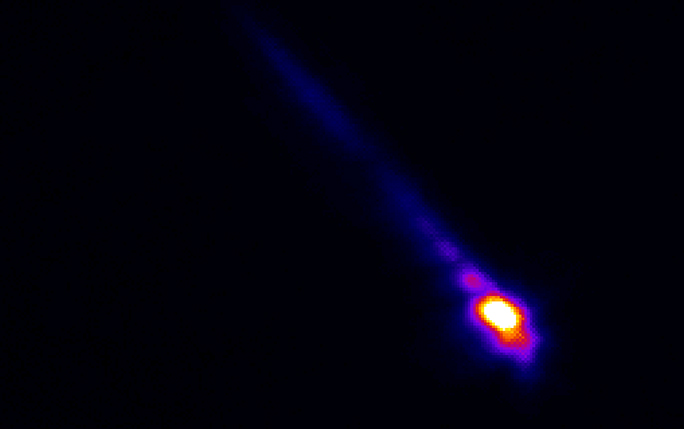Remote access to optical synchrotron radiation imaging at Diamond Light Source

Due to the spread of COVID-19, access to research facilities is currently very limited and only very few experimental studies can be progressed. However, amongst these are measurements related to the project of one of our AVA Fellows, Milena Vujanovic.
Milena's project focuses on the development of new optical imaging techniques for the characterization of charged particle beams. Currently, she is focusing on performing high dynamic range (HDR) beam imaging, using a digital micro-mirror device (DMD). Last month, Milena was supposed to take data as part of her PhD project at the Diamond Light Source. Similar to other countries, access to the facility was not possible, so an alternative approach had to be made.
Together with one of her supervisors, Dr Joseph Wolfenden, remote access to a previously installed beam diagnostics system in the 3 GeV ring at DLS was gained and use for data taking.
The installed system has been developed at the Cockcroft Institute, and was originally designed to be operated from ~400 m away from the source, in the DLS control room. However, thanks to VPN connection and video conferencing software, the experiment was now operated from 320km away!
With many of the synchrotron light sources around the world closed due to the pandemic, there was no guarantee that beam time would be available at Diamond. Thankfully, the synchrotron radiation at Diamond has been in use for several weeks to allow studies focussing on Covid-19. As Milena's experiment was completely non-invasive, it did not alter the beam at all and important data that now allows to understand the performance and limitations of the optical diagnostics better was obtained, in addition to the Covid-19 studies. A series of experiments have been undertaken which aim to characterize the imaging capabilities of the existing diagnostic beamline, and will now shine a light on beam halo effects. Once the data has been fully analyzed, the monitor will be used to develop a single shot emittance and phase space monitoring system.